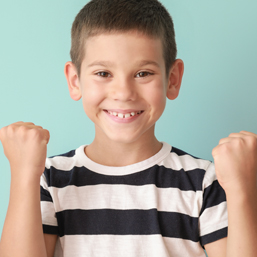
We’ve all said it, or at the very least thought it. In a moment of frustration and disappointment, when we’re in absolute awe as to why our kids aren’t showing appreciation for all that’s being done for or given to them.
But being grateful is not innate. And it most definitely isn’t easy for adults, let alone our little ones. Feeling gratitude requires children to use a variety of complex social emotional skills that need to be taught through ongoing modeling and practice. The kicker? When they do start to feel and understand what it means to be grateful, the benefits can be huge.
Research shows that gratitude is linked to happiness in children at as early as 5 years old, and that grateful adults are happier people in general. Other benefits throughout childhood and teenage years include an increase in optimism, higher levels of positive emotions, increased alertness and awakeness… the list continues and the research shows solid connections between being grateful and psychological, social and emotional well-being overall.
So as caregivers and educators, how do we support the development of gratitude in childhood? Here are a few strategies that can be implemented at home or school:
Teach your child to say thank you in everyday social settings and explain to them why it’s important. “Your friend shared her toy car today. That was so kind of her, what should you say?” This is a first step in the process, and although it may seem superficial, it is an opportunity for children to recognize when others show them kindness through gifts and/or actions.
Explore the concept of gratitude at a greater depth. Prompt children to recognize what they have to be thankful for, and think about why they have access to those people, places or things. You can also prompt these discussions with children’s literature, as there are a wealth of stories connected to this theme. A few of my favorites are listed below:
The Giving Tree by Shel Silverstein
The Thankful Book by Todd Parr
An Angel for Solomon Singer by Cynthia Rylant
Gratitude is My Super Power by Alicia Ortego
Thankful by Eileen Spinelli
Have fun performing random acts of kindness with your children! This could be anything from baking cookies for a neighbor to mailing thank you letters to community helpers or being a Snow Angel by shoveling someone’s driveway. Not only does this show children compassion and service, but it also helps you connect as a family.
Create visual cues for gratitude. A visual cue is often an object, picture or symbol that can help a child become more independent with a given skill, in this case, remembering to be grateful. For my own children and students, their reminders are special rocks that we found together in nature and painted, and placed on their bedside table or desk.
Model it! Children need to see gratitude in action, and we are their biggest influencers whether we like it or not. So, be on your best behavior and say ”thank you” to the clerk at the grocery store, let them catch you writing in your gratitude journal (maybe even read them an excerpt) and talk to them about the things you are grateful for. Model, model, model!
Gratitude may not be the easiest concept to teach, but as parents and educators we play an important role in helping to develop it. Since instilling gratitude in your child at a young age can literally help them grow up to be happier people, it’s worth it!
Sources:
Emmons, Robert. Why gratitude is good. University of California, 2010. https://greatergood.berkeley.edu/article/item/why_gratitude_is_good
Nguyen SP, Gordon CL. The Relationship Between Gratitude and Happiness in Young Children. Journal of Happiness Studies. November 2019.
Ashley is a mom of three, Early Childhood Educator, and elementary teacher. She has a Master’s Degree (Instructional Leadership) from the University of Calgary and loves inspiring families, educators, and caregivers to help their children learn at home and school. For more ideas, follow her at @teachthemlittle.
Calgary’s Child Magazine © 2024 Calgary’s Child